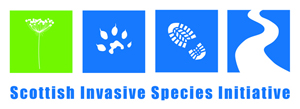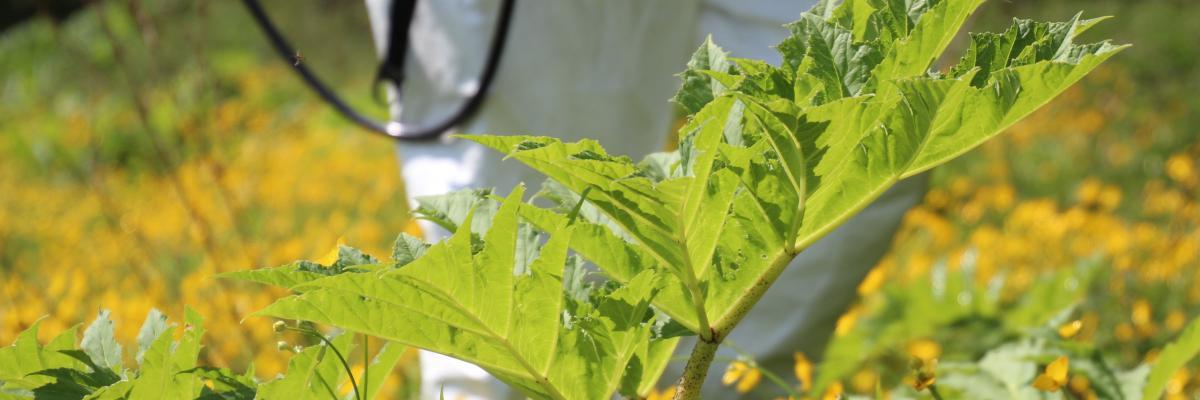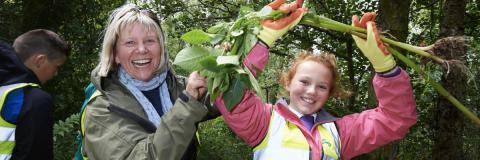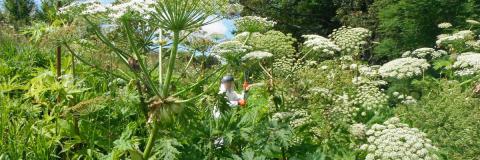Here are some of our most frequently asked questions.
If we haven't answered your query, please email us on [email protected]
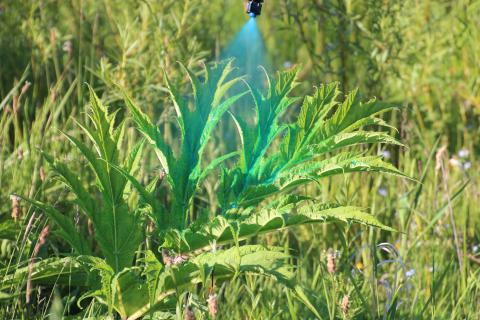
Invasive Plants
How dangerous is Giant Hogweed?
It is the sap of the Giant Hogweed plant that is the problem - it contains a phytotoxin, so if you get it on your skin and combined with sunlight, it causes phytophotodermatitis, a serious skin inflammation. The sap stops your skin being able to protect itself from sunlight so it leads to a severe sunburn, this can be redness, a rash or blistering, It can cause long-term effects and scarring. If you get sap on your skin wash it off as soon as possible with water. Sap is found in all parts of the plant, but is worse when the stem or leaves have been broken or cut, however it is also present in the tiny hollow hairs on the plant - so even by brushing against the plant you can come into contact with small amounts.
NB The sap can burn animals too, so keep your dogs away!
I've seen an invasive plant - who do I tell?
If it's one of our target species (Giant hogweed, Japanese knotweed, Himalayan balsam, American skunk cabbage or White butterbur) and within our project area - tell us here.
If it's a different species of plant read more about who to report it to on this page.
I've got an invasive plant on my land, do I have to remove it?
Best practice would be to remove it, however this is not compulsory. The law says that you should not allow an invasive non-native plant to spread from your land on to other peoples, so the best advice is to remove it before there is a risk of this happening. You'll also be playing your part in supporting our native wildlife and helping the environment.
Is using chemicals the only way to remove invasive plants? Isn't this more harmful to the environment?
In most cases herbicide application is the only effective way to control invasive plants. Used with proper care and attention it is safe for both user and the environment, a minimal amount of chemical is applied directly to the target plant (usually by spot spraying or stem injection). In the case of these stubborn invasive species, the benefit to our native flora (and fauna) of using chemical control and succeeding in eradicating these species from river catchments far outweighs any small risk.
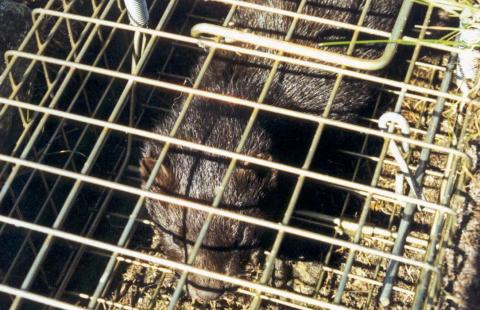
Mink
I'm interested in helping out with a mink trap, what happens if i catch a mink?
If you choose to volunteer with our mink project, one of our project staff or fishery trust staff will visit you first and explain the mink monitoring and trapping process. If you want to adopt a mink trap you'll be paired with a dispatcher, who has been trained to humanely kill any mink caught. So all you'll need to do if you catch a mink in your trap is call your local contact.
Isn't it cruel to catch and kill all the mink?
Mink are killing a large amount of our native wildlife, particularly native water voles and ground nesting birds. They have killed so many they have had an effect on some species populations almost caused the extinction of the water vole. We all have a responsibility to protect our native wildlife, and as mink are an introduced non-native species that doesn't belong in this country, to put nature back into balance we need to remove all the mink. There are strict laws regarding catching and trapping any animal to minimise their suffering and any mink caught are swiftly and humanely dispatched by trained personnel.
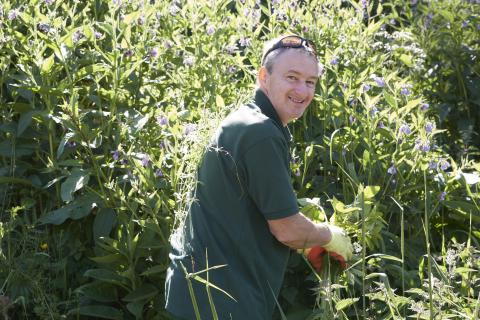
Volunteering
What do I wear?
Wear old comfortable clothes, that you don’t mind getting dirty, stout boots or wellies and waterproofs. Lots of layers of clothes is best as the weather is very changeable in Scotland and you can get quite hot doing physical work. Don’t forget you sunhat/rain hat!
What should I bring?
Sunscreen, insect repellent, any personal medication (inhalers etc), a snack and a drink (for an all-day activity bring your lunch).
What do you provide?
We provide any tools you’ll need, and any Personal Protective Equipment (PPE) e.g. work gloves, goggles etc. A qualified first aider & first aid kit will also be on site.
How old do I have to be?
Our normal volunteering age is 18 years, for working with our project officers and undertaking volunteering.
Some of our conservation volunteer events held in the community (e.g. Himalayan balsam pulling) may accept under 18's when accompanied by an adult, each event will have it's own guidelines and you should confirm with the organiser.
We are happy to work in partnership with schools and youth groups to provide practical environmental volunteering activities for children, which are undertaken under the supervision of the organisation. We can organise practical work such as Himalayan balsam pulling, take your class on a site visit to learn about invasive species, help you set up and monitor a mink raft, undertake classroom visits and provide angling development tution.
You might also be interested in
Our invasive species page has the answers.
